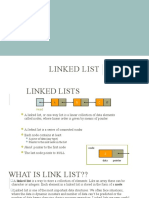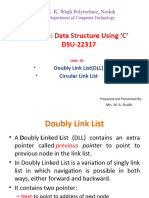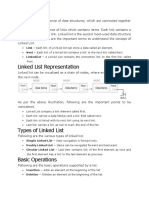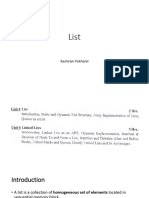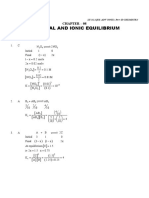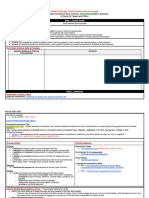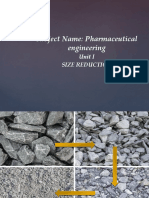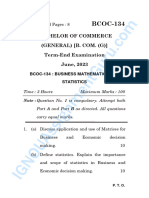0% found this document useful (0 votes)
63 views51 pagesLinkedlist Notes
The document provides an overview of linked lists, including their types (singly, circular, and doubly linked lists), advantages over arrays, and basic operations such as creation, insertion, and deletion. It highlights the structure of linked lists, their applications, and disadvantages, emphasizing their efficiency in dynamic memory allocation and faster insertion/deletion compared to arrays. Additionally, it outlines the operations specific to singly circular linked lists and the unique aspects of doubly linked lists.
Uploaded by
Santhosh Kumar SCopyright
© © All Rights Reserved
We take content rights seriously. If you suspect this is your content, claim it here.
Available Formats
Download as PDF, TXT or read online on Scribd
0% found this document useful (0 votes)
63 views51 pagesLinkedlist Notes
The document provides an overview of linked lists, including their types (singly, circular, and doubly linked lists), advantages over arrays, and basic operations such as creation, insertion, and deletion. It highlights the structure of linked lists, their applications, and disadvantages, emphasizing their efficiency in dynamic memory allocation and faster insertion/deletion compared to arrays. Additionally, it outlines the operations specific to singly circular linked lists and the unique aspects of doubly linked lists.
Uploaded by
Santhosh Kumar SCopyright
© © All Rights Reserved
We take content rights seriously. If you suspect this is your content, claim it here.
Available Formats
Download as PDF, TXT or read online on Scribd
/ 51



















